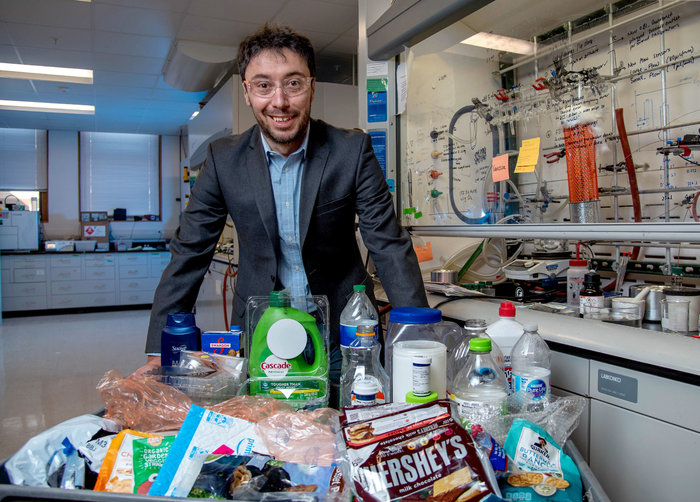
Credit: Casper van der Kooi
Buttercup flowers are known for their intense, shiny yellow colour. For over a century, biologists have sought to understand why the buttercup stands out. University of Groningen scientists have now brought together all that was known about the buttercup and added some new information too. The results will be published by the Journal of the Royal Society Interface on 22 February 2017.
The anatomy of the buttercup's petals is the first step in discovering the secret of its colour. The petals have a one-cell thick epidermis, which contains a yellow pigment. Underneath this very thin cell layer is an air chamber. During his work as a PhD student at the University of Groningen, Casper van der Kooi (who now works at Lausanne University, Switzerland) measured light spectra reflecting from this epidermal layer.
Unique
'We discovered that this layer acts as a thin optical film. The colour-generating mechanism is similar to oil on water or a soap bubble', says Van der Kooi. 'Light is reflected on both sides of the epidermis, where the cells and air meet. As the cell layer is very smooth and thin, optical interference occurs and the reflected colours merge. This creates a white sheen, which makes the petals seem glossy.'
This kind of thin pigmented film is unique in the world of plants. 'Butterflies use similar structures to produce colour, as do some birds, but buttercups are the only known flowers to do so', says Van der Kooi. The structure of the epidermis has been described before, but Van der Kooi and colleagues are the first to measure light spectra and conclude that the cell layer acts as a thin film.
Advantages
Alongside the air chamber, the buttercup petals have another unique structure: a starch layer, which again scatters light and sends some of it back through the pigmented epidermis. 'Thus, the light reflected by the starch travels through the pigments twice, giving it a very rich yellow colour.' Van der Kooi used a physical model of the petals which he had previously developed to explain how these unique anatomical features are responsible for both the intensity of colour and the sheen of the petals.
But why should the flower produce such complex petals? Van der Kooi can see two advantages. 'The first is that, under the right conditions, the gloss reflecting from the epidermis can produce a bright flash that is visible to pollinating insects from a great distance.' The sun needs to be high in a clear sky for this to happen.
Warmer
The second advantage is that the buttercup is heliotropic, which means that its flowers follow the sun, especially on cold days. When it is cold, the petals form a paraboloid-shaped cup (like a satellite dish), thus reflecting the sunlight towards the central area of the flower, where the reproductive structures are located.
'We are still doing measurements, but our hypothesis is that this light helps to increase the temperature of the reproductive organs, which enhances seed and pollen maturation.' Previous measurements by others have shown that the centre of the buttercup flower can be several degrees warmer than the ambient temperature. 'But this may also be due to the shielding effect of the petals from the wind.'
This work has thus solved much of the mystery surrounding the buttercup. 'We can now explain the effects of the complex anatomy of the petals.'
###
Reference: van der Kooi CJ, Elzenga JTM, Dijksterhuis J, Stavenga DG. 2017. Functional optics of glossy buttercup flowers. Journal of the Royal Society Interface 22 February 2017
Media Contact
Rene Fransen
[email protected]
@univgroningen
http://www.rug.nl/corporate/index
############
Story Source: Materials provided by Scienmag






